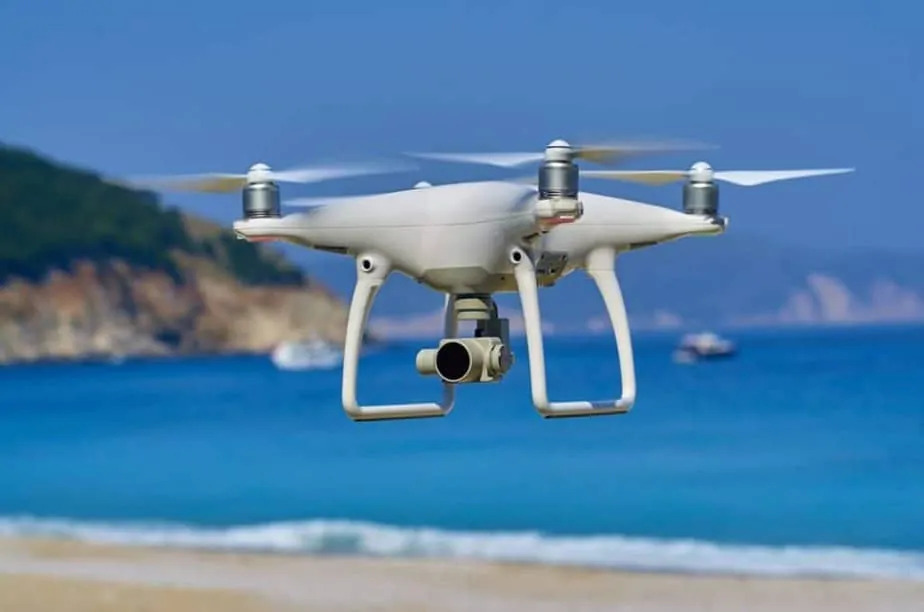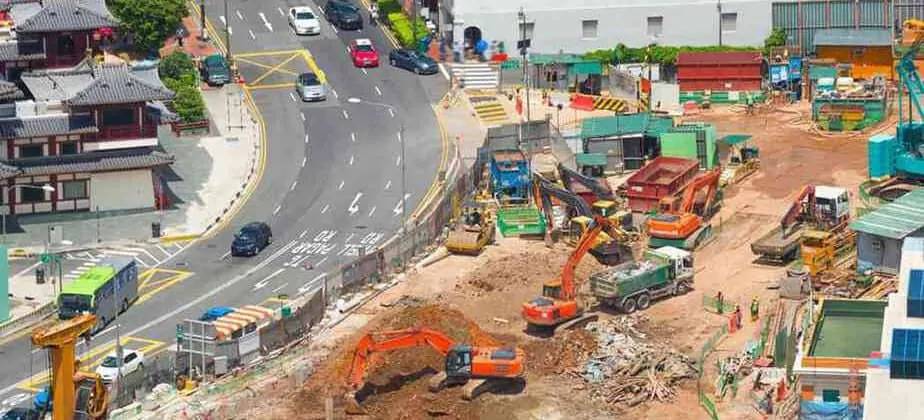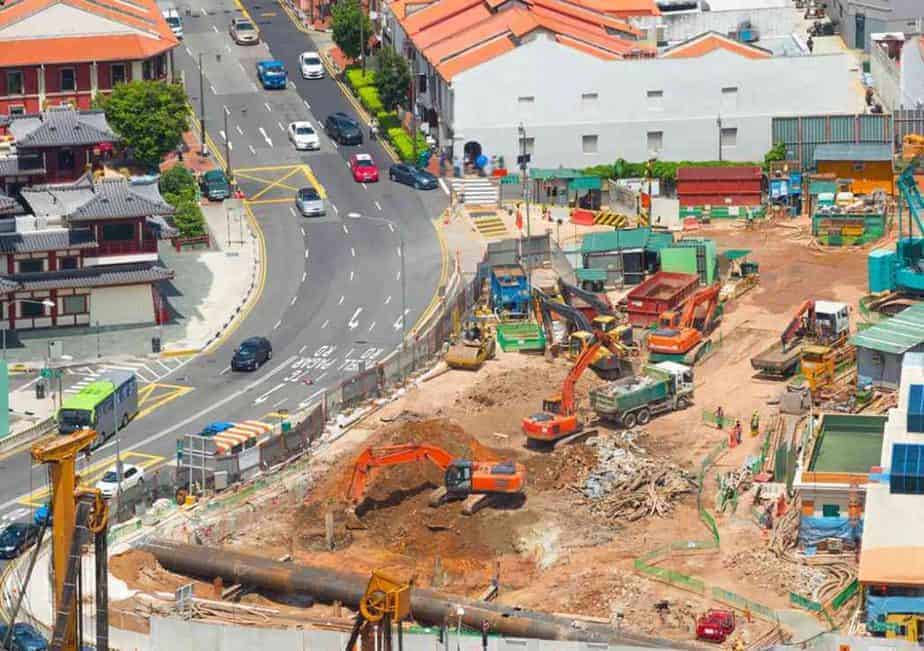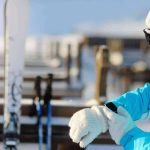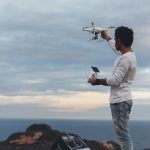Marketing Specific UAV Aerial Photography Techniques
Now that you have the generic aerial process down, there are some particular methods you need to follow in certain markets. In other words, how you approach and run an aerial project at a 200-acre ranch for a real estate shoot differs from what you do at a single-acre construction site project. Each aerial market has its particulars, and you need to be aware of them so you can quickly adapt and be prepared.
Real Estate Aerial Techniques
Aerial projects with large land-only ranches in the hundreds of acres can be a challenge due to the sheer size and accessibility issues. Google Earth planning is critical so you can break up the areas of interest into sectional flights. With these large areas to portray, you will not only be telling a story but will be taking the viewer on a structured aerial tour. You may even need four-wheel drive all-terrain vehicles or have to hike some areas due to hostile topography.
Plan it out thoroughly, bring everything you could possibly need, break it up into manageable pieces, and fly it well the first time. The 100-acre ranch will be a more rounded project since you will have both the home and barns to showcase along with the positive features of the surrounding land.
Do a half-and-half video between the land and infrastructure to give viewers a good feel of the home they are thinking of purchasing. Again, break the project into sections and move around the property during your various sorties to capture different aspects such as fields, ridges, ponds, creeks, fences, and tree lines. Smaller, rural properties less than 20 acres can usually be done in a couple of sorties and a single battery change. Many times I can stand in one place under a tree and shoot the whole project by peeking around the trunk from under the tree’s canopy.

The smaller the rural property, the more chance of armed country people within shotgun range, so be extra careful during bird hunting season. Occasionally you will get an aerial gig for a single-acre suburban property. Shoot these during the week, and not in the summer. That way, very few people will be around. Since suburban homes are very close together, you will most likely be flying over other neighbors’ property lines to get the angle of view to the contracting residence. This can cause too many interactions that can become tense. Pick a time when very few people will be home or outside and get it done quickly.
No matter the size of the real estate environment you are flying, give the property owner time to clear the clutter. This can be as simple as moving a trailer or a few cars. Other times it can take weeks if the person has to clear burn piles, eliminate huisache brush, or fix miles of wood fence that have fallen down over the years. I had to reshoot a range once because the client wanted to shred his 40 acres but forgot to tell me before the flight. The point is to let a site owner prepare the property, so he or she is proud to show it.
Construction Site Aerial Techniques
One construction-site-specific issue is timing. Timing to film a concrete pour while it is happening or at least filming during construction activity is usually requested. What you do not want to film is a vacant construction site with no workers present since that gives the impression nothing is getting done. Avoid flying directly over workers since UAVs should never be above living things. Even though they will have hard hats on, try to frame people through your flying camera at a 45-degree angle from 75 feet above.
Hopefully, you will have negotiated a multi-visit aerial job so you can film each stage of construction. This will require you to keep up good communications with the site supervisor so you can schedule your flights to cover the initial dirt work, which could last months on some large projects. Next, you could film the foundation preparation phase with the workers laying the rebar and foundation forms. Then, fly around on the very day while they pour the foundation’s concrete.
Schedule a sortie during the wood framing of the building or the raising of the steel skeleton structures. Also, get an aerial just as they are putting on the roof, installing windows, and getting ready for the building to be “dried in.” Once the outside structure is complete and the rest of the work is on the inside and not visible by your airborne UAV, wait for the opportunity for the final filming of the finished project. Then, as a final edited version, you can take sections of each phase of construction and compile an aerial timeline showcasing the project from start to finish in a single video from above.
Law Enforcement (LE) Aerial Techniques
Law enforcement (LE) aerial projects will be few and far between, but if you develop a good relationship with a local police department or, better yet, the County Sheriff’s Office, interesting aerial opportunities may come up quickly. The key with LE is to always be ready to respond to an officer’s aerial needs. Projects could be due to a missing person in a largely rural area, a drug field operation, or a dangerous SWAT mission. The key component here is readiness.
That includes your bird, the batteries, and your personal gear. I recommend keeping a set of good hiking boots in your vehicle because odds are the LZ will be on a clearing in the woods rather than a nice, open parking lot. Owning and using a police scanner may also help in your marketing efforts. You may hear a call about a fast-moving grass fire or a SWAT operation, which could quickly develop into an opportunity for your UAV to help LE clients. In our small town, I have the cell numbers to the fire chief, sheriff, and chief of police so I can call to offer my airborne eye in the sky just in case they forget about me. Compared to the cost of a manned helicopter, your drone service is a bargain if you can make it on time.
The primary problem here is keeping a couple of batteries charged up at all times, so you can be ready to fly in less than 15 minutes. The only real way to do that is to rotate them out and drain them with dummy flights at least once a week. For it to be worth the effort, I would need at least one flight per month.
Commercial Dealerships
Though a booming market right now, once a car dealership has a drone video, they probably will not be a repeat customer. If you are one of the first legit 333 droners to make the sales call on a dealership, then you will have a good chance of getting the flight. It is still worth the effort to meet with the dealership manager to show your aerial portfolio. If the dealer already had an aerial performed in the past, it may not be as smooth and professional-looking as yours could be.
While you are watching TV and you see a car, boat, or RV dealership commercial and you see the fisheye effect with the horizon bent, and then you have a good prospect. Cold-call and sell the management on how you can reshoot the dealership with no fisheye effect, and better angles, smoother video, and higher resolution.
Use the same flight maneuvers to highlight the vehicles on the lot and the standard large American flag waving. I also fly a close side-shot of the dealership sign and the site under some good light close to sunset. Since they will only use a 5-second video clip for their 30-second commercial, give them numerous 10-second fade-away, scanning, sweeping, and rising scenes. That way, they can trim them out just right for a tightly edited TV commercial.
If you can get away with it, try to convince the dealership to put a small banner at the bottom of your aerial clip with a phrase like “FAA Compliant 333 Exemption #12345 — Smith’s Drone Service.” Tell the dealership it will help the aerial pass FAA scrutiny, but it can also serve as advertising for your UAV service.
Tower Inspections
Water and cellular towers must all be inspected regularly for structural integrity, governmental compliance efforts, maintenance reasons, and insurance requirements. In the past, someone had to gear up, climb up, and eyeball every foot on all sides of the vertical structure several times a year.
With the advent and acceptance of UAVs, those tower climbers will be replaced by UAVs for a substantial percentage of the time. Every blinking red light you see on a tower at night is an opportunity for repetitive UAV flight income. Drone aerial inspections of towers will be a major market in the coming years.
Drive by the towers and note the phone numbers of the management companies for your cold-call list. I recommend a weekend going out in all four directions for an hour each to make a map of all prospect towers that may need your drone inspection service.
From that list, compile a spreadsheet and contact the company that is managing the most towers in your area. One good sale call with them may land you plenty of repeat aerial business deals. To perform these inspection flights, you will mainly use your high resolution still photos rather than HD video. Some tower management companies may require both video and photos, but I would focus on initially gathering closeups from the sides and corners, totaling eight pictures from a distance of 20 feet.
The repetitions will depend on the vertical coverage your fixed focal lens covers but leave some overlap. A typical tower flight of a 150-foot cellular tower will require more than 100 pictures with a higher rate of coverage at the top, where the active components are rigged.
You will want to have 16 or more shot angles compared to only 8, that cover the vertical cable runs and support struts. You will want the tower managers to be able to see any cable wear, loose connectors, broken supports, bird and wasp nests, and any other antenna or cabling anomalies.
Another good selling point is to give them a straight-down 90-degree camera pitch shot just over the tower for a current Google Earth view as of that day. That way, they can see what the immediate environment surrounding the tower looks like. Also, perform a ground-level pictorial to capture the state of the fencing, gates, road, and UPS system.
Events: Weddings, Festivals, and Races
Events can be challenging for numerous reasons because they are time-specific, high-profile, and sometimes high-risk. Positive gatherings of humanity captured with aerial photography can be very special. As responsible commercial UAV pilots, we will have opportunities to film some extraordinary scenes, but we must approach those flights carefully and cautiously. Remember our number one rule; “fly over no heads,” and at the very least minimize your crowd flyover vectors.
Burn the battery power if you have to fly a complete circle over trees and buildings to avoid direct human drop zones, just in case of a power failure or catastrophic equipment malfunction. If there is law enforcement on site, contact them and introduce yourself as an FAA-sanctioned commercial drone pilot to set them at ease. I also contact the local 911 dispatch through a non-emergency phone number to brief them on my flight with time, location, and the nature of the coverage.
This is to help them if they need to chill out some nervous Nellie who calls 911 about some drone invading the celebration, not knowing the event organizer is paying you to be there. For weddings and races, you have to be quite early most of the time to evaluate the LZ, obstacles, and special client aerial requirements.
Plan to arrive at least 30 minutes ahead of the scheduled flight and coordinate with the wedding planner or the race coordinator. Have your observer plan out emergency LZs just in case something goes wrong. Walkie-talkies come in very handy in crowded outdoor venues so bring those along. With weddings, coordinate with the person running the ceremony so you will be in place when they do the walk and the grand exit.
You do not want to be buzzing in the air during the vows when all is very quiet, with the annoying exception of your drone filming angry eyes from the crowd looking at you. Battery consumption, LZ difficulties, and general timing issues can be a real pain with weddings so have patience. Since you will most likely be working with the primary wedding photographer, take his or her cue since that is your client. The main thing to know about filming races is where the start and finish lines are located. On the race start, try to hover 50 feet up and 500 feet away to comply with your COA.
Then as the starting gun goes off, fly in reverse in a rise to capture the running masses from above. This way, you can avoid flying overheads but still capture the essence of the competition. Festivals are not as stressful time-wise since the main goal is to capture the crowds having a good time. The same “no head flyover” is in effect, but at a 45-degree angle with your UAV over trees, building roofs, or empty fields, you can film the masses with no risk.
Commercial drone photography of public events can be lucrative, fun, and high-stress, all at the same time. You will deal with dynamic ground conditions, changing time requirements, and high-profile UAV operations. With good planning, close observation, and professional piloting, it can be conducted safely and productively, but it is all up to you, the pilot in charge.

